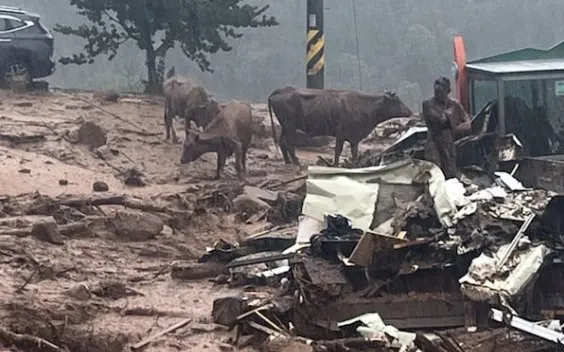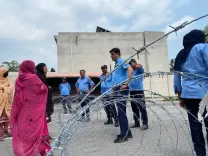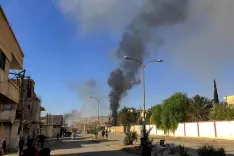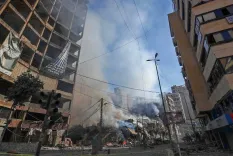What Impact Have Heavy Rains Had on South Korea?

Synopsis
Key Takeaways
- Five fatalities and four missing due to landslides.
- Over 7,000 residents evacuated across the nation.
- Nationwide mobilization order issued by the National Fire Agency.
- Severe damage to public infrastructure reported.
- Additional rainfall of up to 250 millimeters expected.
Seoul, July 19 (NationPress) Intense rainfall that battered South Korea for four consecutive days has resulted in at least five fatalities, with four individuals reported missing and over 7,000 residents evacuated, according to officials on Saturday. Weather authorities have also cautioned about the possibility of further downpours nationwide.
Earlier today, a deceased individual was discovered in Sancheong County, located in South Gyeongsang Province, after a landslide triggered by the heavy rain engulfed two homes in a local village. Rescue operations are currently underway to locate two other individuals who are missing due to the landslide.
The National Fire Agency has issued a nationwide mobilization order for firefighting efforts in response to the landslide, as reported by Yonhap news agency.
Since the rains began pummeling the nation on Wednesday, both central and local government officials have confirmed five deaths and four missing persons. The Central Disaster and Safety Countermeasures Headquarters is expected to release an official update on casualties and damage assessments later today.
Weather authorities have raised alarms that an additional up to 250 millimeters of rainfall could occur today, heightening fears of further destruction and loss of life.
Evacuation orders have been issued for 7,029 residents across 4,995 households, with more than 2,800 individuals still unable to return to their homes.
The relentless downpours have led to flooded roads, landslides, and inundated homes throughout the country.
Extreme rainfall was recorded overnight in numerous regions.
On Yeongheung Island in Incheon, 98.5 mm of rain fell within just one hour, while Boseong in South Jeolla Province recorded 88 mm.
Some regions have already experienced over 40 percent of their annual average rainfall in the past four days. Seosan reported 558.6 mm of rain from Wednesday to Friday morning, which represents 45 percent of its yearly average.
A total of 729 cases of public infrastructure damage have been reported, including 388 flooded roads, 133 landslides, and 57 collapsed river facilities. Damage to private property has reached 1,014 cases, encompassing 64 flooded buildings and 59 instances of submerged farmland.









